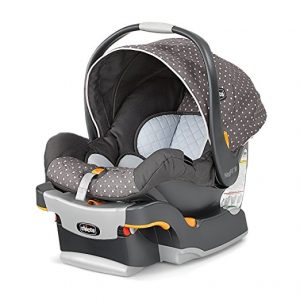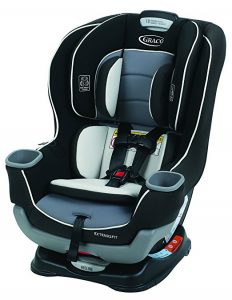 According to California State Law, Children must be seated in the rear seat of a vehicle in an appropriate car seat or booster seat until they are 8 years old or 4’9″ tall. Children must remain in a rear facing car seat until they weigh 40 pounds or more or are at least 40 inches tall.
According to California State Law, Children must be seated in the rear seat of a vehicle in an appropriate car seat or booster seat until they are 8 years old or 4’9″ tall. Children must remain in a rear facing car seat until they weigh 40 pounds or more or are at least 40 inches tall.
People from San Diego and Los Angeles all the way up to Sacramento will be happy to know that the 2018 car seat laws are the same as they were in 2017. However, it is important to note that new laws took affect January 1, 2017. And, of course, there are tens of thousands of new parents in California every year. If you are one of them, congratulations!!
Children under 2 years old:
Children under 2 years of age shall ride in a rear-facing car seat they weigh 40 pounds or more or are at least 40 inches tall.
Children shall be secured in a manner that complies with the height and weight limits specified by the manufacturer of the car seat.
Best infant car seat:
 The Chicco Keyfit Infant Car Seat and Base with Car Seat is, according to Consumer Reports, the #1 rated car seat in America for infants. This car seat is amazing for infants but does max out at 30 inches of height. It comes with inserts for newborns.
The Chicco Keyfit Infant Car Seat and Base with Car Seat is, according to Consumer Reports, the #1 rated car seat in America for infants. This car seat is amazing for infants but does max out at 30 inches of height. It comes with inserts for newborns.
You can purchase the Chicco Keyfit infant seat on Amazon Prime right now here: http://amzn.to/2hlKihC.
Best rear facing convertible seat for California’s laws:
 Graco Extend2Fit Convertible Car Seat meets the height/length requirement of 40″ and in fact supports children up to 49″ tall. Buy it on Amazon Prime here: http://amzn.to/2DZl6HM. After 40lbs, the seat supports children in the forward facing position up to 65lbs. This car seat provides your child with the maximum amount of legroom possible.
Graco Extend2Fit Convertible Car Seat meets the height/length requirement of 40″ and in fact supports children up to 49″ tall. Buy it on Amazon Prime here: http://amzn.to/2DZl6HM. After 40lbs, the seat supports children in the forward facing position up to 65lbs. This car seat provides your child with the maximum amount of legroom possible.
Ask anyone who owns this car seat if they like it and they will say YES. It’s under $170 delivered and grows with your child.
Forward facing in California
Children can move to a forward facing car seat once they have outgrown the legal limits and manufacturer’s specifications for the rear facing car seat. Keep in mind that children under the age of 2 are 500% safer in a rear-facing car seat than a forward facing car seat.
Booster Seats in California
A child is ready for a booster seat when they have outgrown the weight or height limit of their forward-facing harnesses. This usually occurs around 65 pounds.
No more car seat
Once children reach 8 years of age OR have reached 4’9” in height, they may graduate from the booster seat to a safety belt, however, children are safest in a booster seat until they are 4’9″.
All passengers of all ages are subject to California’s Mandatory Seat Belt law.
The January 1, 2017 Car Seat Law
Effective January 1, 2017, the State of California mandated that children under 2 years of age shall ride in a rear-facing car seat unless the child weighs 40 or more pounds OR is 40 or more inches tall. This is a good law and all states should follow suit. That’s because children can’t support their heads in accidents and suffer serious injuries and deaths in cars every day which could have been prevented if they were in a rear-facing car seat. Science and statistics show us that injuries are drastically reduced when children are in rear facing car seats until they are 24 months of age.
Additional Resources:
- The Top Rated Rear Facing Car Seats for 2018.
- Child Safety Belt and Passenger Restraint Requirements – California Vehicle Code Section 273630
- Exceptions for emergencies, medical conditions, emergency vehicles and vehicles with no rear seats -California Vehicle Code Section 27363
- California DMV’s Driver Handbook’s page on Child Restraints
- NHTSA’s page to find a free car seat safety checkpoint near you, often available at nearby fire departments and children’s hospitals: NHTSA Car Seat Inspection
- Get a free inspection at a California Highway Patrol office. Find the nearest CHP office here.
California Highway Patrol also put together this great video:
FAQ
When can my child sit in a booster seat in California?
In California, a child is ready for a booster seat when they have outgrown the weight or height limit of their forward-facing harnesses. This usually occurs around 65 pounds, but be sure to read the forward-facing car seat’s owner’s manual to determine height and weight limits.
